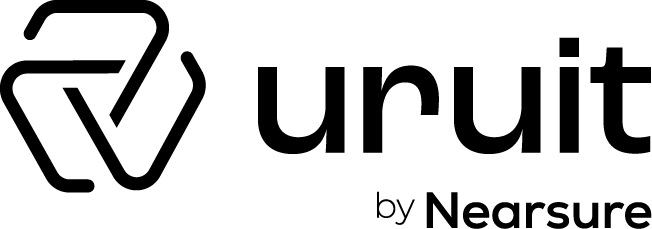Contents
5 Benefits of Outsourcing That Make Sense for Saas
Since we started in 2007, we’ve seen SaaS booming especially in the talent management, financial, commercial real estate and construction industries, and a new breed that’s exploring the advantages of AI and blockchain. But, no matter the industry, we have seen similar needs and concerns arise whenever we meet someone new in SaaS.
Some need to rapidly achieve product-market fit, or find a better way to retain their engineering talent and product knowledge. Others need to respond faster to changing markets, in order to remain leaders in their respective niches. We’ve also seen SaaS companies raise more capital or acquire other companies, leading to various, exciting challenges on the engineering level.
The need to look for an external provider becomes apparent in any of the above scenarios and that’s where the option for nearshoring (outsourcing to South America) part of or a whole development project comes in.
Let’s see the benefits of outsourcing for SaaS!
Why outsourcing is ideal for SaaS companies?
1. Tackle updates and rewrites quickly
To deliver what the market wants when it wants, there needs to be real-time collaboration between engineering, product, sales, and marketing. Continuous delivery and deployment are extremely important. Involving engineers from South America means they can participate in agile ceremonies with the team, from planning to review, as they are nearly in the same time zone as the US and just a skype call or an easy plane ride away.
For the mature SaaS players, many have to tackle re-writes or re-platforms to move away from legacy technologies to compete better with new market players. As technology evolves, in particular in web and cloud, velocity matters and product teams need experts in newer technologies to supplement their in-house team.
Many times, companies face growing pressures from stakeholders. To fulfill them, they need to set ambitious timelines for releasing new versions or entirely new products. Therefore, working with a nearshore team is an efficient way to expend their time and budget.
2. Retain an engineering team and guard internal knowledge
Building SaaS applications is different than building a “set it and forget it” internal business application. That’s because SaaS handles multi-tenant architectures, cloud for performance, compliance security, paid versus free versions, etc. Therefore, it’s imperative that SaaS companies retain as much internal knowledge as possible in order to facilitate its constant evolution.
Minimizing churn is also important for maintaining momentum; having to recruit, hire, and onboard team members during the middle of a project undoubtedly causes unwanted delay. Even when US companies do fill important open roles and secure a “dream candidate,” it’s likely he or she will leave in 1-2 years.
The short tenures seen today stem from the abundance of job openings in tech. Plus, a limited number of candidates to fill these positions results in software engineer job-hopping at unprecedented levels. Top tech companies in Silicon Valley are poaching left and right from their competitors, with the larger ones offering more alluring benefits, leaving the less mature or smaller SaaS companies at a disadvantage.
With poaching comes the dispersion of highly guarded best practices that give companies their edge. Once lost, they need to innovate and search for new ways to outperform the competition. Losing intellectual property is also a concern.
Latin America’s growing talent
With a nearshore team, SaaS companies can trust that they have high-quality engineers whose talent they can more easily retain, and rest assured that their work is protected. This is due to several factors; one of which is the fact that South America embraces technology for a better future. There are tens of thousands of new university graduates in the computer sciences every year whose talent is yet to be fully tapped. The region also boasts higher rates of English proficiency and according to StackOverflow, better engineering quality of work than Asia.
As the nearshoring trend grows, opportunities to work with US companies are more sought after. This happens because working for foreign organizations can present greater economic opportunity and social mobility. With the inherent stability of nearshoring, SaaS companies don’t have to lose sleep over talent wars or the fear of losing their trade secrets.
3. Stretch the budget further
For newer SaaS players who may be bootstrapping or working within a limited budget, outsourcing the first MVP (minimum viable product) to a nearshore location makes sense due to the lower rates found for the same talent in South America versus the US. Instead of having to provide benefits, office space, and physical resources, teams can rapidly scale up and also gain access to a larger variety of complementary skill sets, from UX/UI design to product management.
For SaaS companies that use nearshore outsourcing to create an MVP, they receive added value due to the diverse roles that are available to them when they partner with an agency versus hiring one or two in-house team members. Especially in the initial discovery phase, it’s important to place heavy emphasis on UI/UX design, so finding a nearshore partner with a vast array of roles is key.
Another benefit is having the opportunity of undergoing this phase in person (without shelling out thousands in travel expenses to reach remoter parts of the world).
4. Access localization know-how
Recently, Pipedrive’s CEO mentioned the challenges in localizing its product as the company expands to the Brazilian market. One benefit of nearshoring for SaaS companies is that a South American development partner will give way to the access of engineers and product designers with native Spanish or Portuguese, eliminating the need to hire external localization specialists. This also helps SaaS companies prevent the chance of disappointing users in these new markets due to poorly translated web pages (Literal translations won’t cut it!).
Working with a nearshore team gives SaaS companies the opportunity to leverage diversity. While North and South American cultures are very similar, the nearshore team will understand the nuances of both, making localization efforts a success.
5. Add more value
While the in-house SaaS team is focused on the value proposition of its product, a nearshore team can focus on innovating or improving parts of it without compromising the core offering of the company. Having fresh eyes, the nearshore team can view the product from a unique perspective and look at it through different lenses. It can then, in parallel, work on enhancements while the day to day activities remain in place. Such is the case with one of UruIT’s SaaS clients in the commercial real estate industry, Building Engines; in parallel to working on a technology rewrite to move away from its legacy system, it counts on us to add more features for its users like chatbots.
SaaS finds success with development partners
US SaaS companies of all sizes that want to move fast are increasingly turning to their neighbors to the south to hit the ground running. Outsourcing eliminates the time it takes to find elusive talent while location proximity and cultural similarities facilitate agile development. To see some examples of our work with SaaS companies like the talent platform for professional development, Insala, or e-Builder for construction management, visit our portfolio. Also, contact us if you’d like to discuss your SaaS needs in software development!



